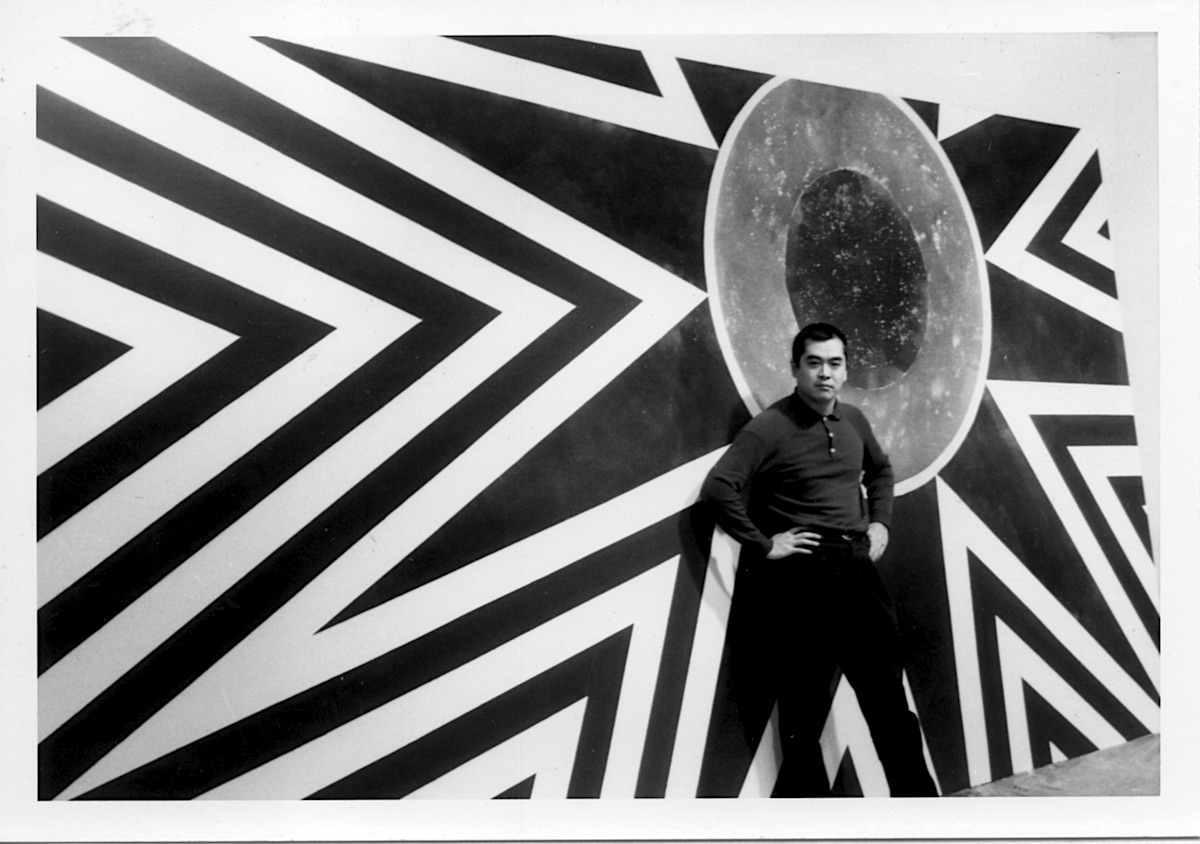Hsiao Chin (b1935), who died on 30 June, is one of a tiny number of postwar artists who made significant contributions both to European art and to the art of Greater China: in 1961, he co-founded the Milanese avant-garde Punto movement together with the Italian artist Antonio Calderara and the Japanese sculptor K Azuma and yet only six years earlier he had in Taiwan co-founded the first Chinese abstract painting group, Ton Fan group, together with artists including Li Yuan-Chia (who would later develop an art space by Hadrian’s Wall in England).
Hsiao Chin was a man for all regions – his work is in the collections of New York’s Metropolitan and MOMA and Hong Hong’s M+, in Italy’s National Gallery of Modern and Contemporary Art, and in the Shanghai Art Museum. Characteristically, he wrote to NASA in the 1960s, asking if he might be the first astronaut in space. He always had the future in his bones.

Hsiao Chin was born in Shanghai in 1935, to a father who founded China’s first music school and to a mother who was a devout Christian. In his own phrasing, he was always haunted by ‘duality’ – by rationality and by transcendentalism. In 1949 (the year of the birth of new China), he moved to Taiwan, went to Spain on a scholarship in 1956 and moved to Italy in 1960, where he became a friend of Lucio Fontana. As he told me, it was the modernity of Milan (which rivalled New York for cosmopolitanism in the early 60s) which pushed him to reconsider the strengths of Chinese culture. Look at his paintings of the early and mid-60s, and what is on view is a remarkable collision of modern geometric abstraction with a cosmological ’empty’ ground derived from Buddhism and Lao Tse – and contemporary space travel. It is hardly surprising that his one London show in the 60s – he lived in the city for six months in 1966 – should be at the influential Signals Gallery (where David Medalla showed, among many others). During this time, he also met Richard Lin, another artist trying to move beyond the ‘east-west binary’.
The 60s were an extraordinarily productive period for Hsiao Chin – he was involved in 13 exhibitions in eleven countries across Europe and Asia between 1961-7. As if that were not enough, he moved to New York between 67 and 72, staging his first US exhibition at the Russ Fried Gallery and meeting artists from Rothko to de Kooning. His painting shifted temporarily to hard-edged abstraction. He moved back to Italy, where he became a distinguished teacher at the Brera Academy in Milan, perhaps Italy’s foremost art school. He showed his art regularly with a retrospective at the important Marconi studio in Milan. It was not until 94 that he had a retrospective at the CAFA Museum in Beijing, his first-ever show in China.
Hsiao Chin never lacked exhibition opportunities throughout his career. Still, over the last four or five years, museums embraced him with a fresh intensity – whether Paris’ Musee Guimet, Beijing’s Song Museum or the Mark Rothko Art Centre, where the paintings were staged close to Rothko’s own.
As I write, a major immersive exhibition prompted by Hsiao Chin’s paintings is due to open in Macao, and one of his works can currently be seen in my part of the Chengdu Biennale – where his work sits close to those of the important late Polish painter Stefan Gierowski and to the Irish-American painter Sean Scully.
It is with artists such as Gierowski, Scully as well as the Chinese-French artist Zao Wou-ki that Hsiao Chin belongs. There is a family resemblance amongst them, not stylistically – but all are committed to finding a way of holding together the past and the future, the rational and the transcendental. It strikes me that Hsiao Chin routed and rooted, will loom larger as art history is globalised and those tired binary categories ‘East and West’ fall into disuse. Hsiao Chin (30 January 1935 – 30 June 2023)
Words: Philip Dodd Top Photo: Hsiao Chin in Signals Gallery London, 1966, Courtesy of Hsiao Chin Art Foundation

